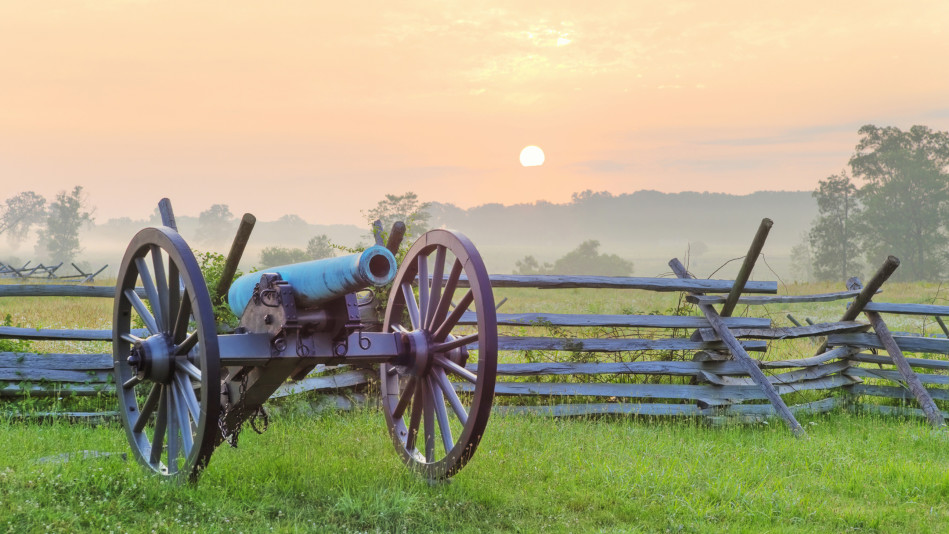Why America Needs Its National Parks More Than Ever
Author Terry Tempest Williams on how the parks became the nation's sanctuary.

Photo: Tetra Images/Getty Images
America’s national parks began with a vision of peace.
On June 30, 1864, about a year after the Civil War’s deadliest battle, at Gettysburg, President Lincoln signed the Yosemite Grant Act, protecting for the first time—for all time—tens of thousands of acres of wilderness. By his hand, Yosemite Valley and its ancient sequoias became America’s inaugural nature preserve. Half a century later, President Wilson would create the National Park Service, which celebrated its centennial in 2016; many more lands, including Grand Canyon National Park in 1919, would come under protection in the decades that followed.
Lincoln never visited these magnificent expanses, but they came to life in his imagination through photos he’d seen. He believed our majestic vistas might offer a healing grace to a country desperately in need of it—landscapes all would own and cherish as their shared natural heritage.
I no longer see America’s national parks as, in novelist Wallace Stegner’s words, our “best idea,” but rather as our evolving idea, emblematic of our ongoing struggle to create circles of reverence and respect where we remember what it means to be human—and are reminded that humans are not the only species to live and dream. The parks recall us to the intrinsic beauty of life, interconnected and interrelated.
More than scenery or sites of recreation and retail, these lands are portals of wonder, open doors that swing back and forth from our past to our future. When we enter these places of grandeur, we stand on the periphery of awe. Once, in need of advice, I asked my friend Doug Peacock, who’d kept a map of Yellowstone in his back pocket throughout his tours as a soldier in Vietnam, how he staves off despair. “Insulate yourself with friends and seek out wild places,” he answered. The national parks are those wild places. Their nature is bound to our own capacity to stay openhearted and curious even when fear threatens to shut us down. They are our hope.
Holy Lands
In July 2015, leaders from five Native American tribes forged a coalition and asked President Obama to designate as a national monument the Bears Ears region, 1.9 million acres in southeastern Utah adjacent to Canyonlands National Park. Some of the oldest and most significant cultural sites in America—cliff dwellings, prehistoric villages, and rock art panels—would be preserved and protected from oil and gas development and off-road vehicle recreation. And establishing the monument would be a gesture of healing and respect between the U.S. government and Native Americans. To voice your support, sign the petition at BearsEarsCoalition.com.
Terry Tempest Williams is the author of, most recently, The Hour of Land.
Want more stories like this delivered to your inbox? Sign up for the Oprah.com Spirit Newsletter!
On June 30, 1864, about a year after the Civil War’s deadliest battle, at Gettysburg, President Lincoln signed the Yosemite Grant Act, protecting for the first time—for all time—tens of thousands of acres of wilderness. By his hand, Yosemite Valley and its ancient sequoias became America’s inaugural nature preserve. Half a century later, President Wilson would create the National Park Service, which celebrated its centennial in 2016; many more lands, including Grand Canyon National Park in 1919, would come under protection in the decades that followed.
Lincoln never visited these magnificent expanses, but they came to life in his imagination through photos he’d seen. He believed our majestic vistas might offer a healing grace to a country desperately in need of it—landscapes all would own and cherish as their shared natural heritage.
I no longer see America’s national parks as, in novelist Wallace Stegner’s words, our “best idea,” but rather as our evolving idea, emblematic of our ongoing struggle to create circles of reverence and respect where we remember what it means to be human—and are reminded that humans are not the only species to live and dream. The parks recall us to the intrinsic beauty of life, interconnected and interrelated.
More than scenery or sites of recreation and retail, these lands are portals of wonder, open doors that swing back and forth from our past to our future. When we enter these places of grandeur, we stand on the periphery of awe. Once, in need of advice, I asked my friend Doug Peacock, who’d kept a map of Yellowstone in his back pocket throughout his tours as a soldier in Vietnam, how he staves off despair. “Insulate yourself with friends and seek out wild places,” he answered. The national parks are those wild places. Their nature is bound to our own capacity to stay openhearted and curious even when fear threatens to shut us down. They are our hope.
Holy Lands
In July 2015, leaders from five Native American tribes forged a coalition and asked President Obama to designate as a national monument the Bears Ears region, 1.9 million acres in southeastern Utah adjacent to Canyonlands National Park. Some of the oldest and most significant cultural sites in America—cliff dwellings, prehistoric villages, and rock art panels—would be preserved and protected from oil and gas development and off-road vehicle recreation. And establishing the monument would be a gesture of healing and respect between the U.S. government and Native Americans. To voice your support, sign the petition at BearsEarsCoalition.com.
Terry Tempest Williams is the author of, most recently, The Hour of Land.
Want more stories like this delivered to your inbox? Sign up for the Oprah.com Spirit Newsletter!



